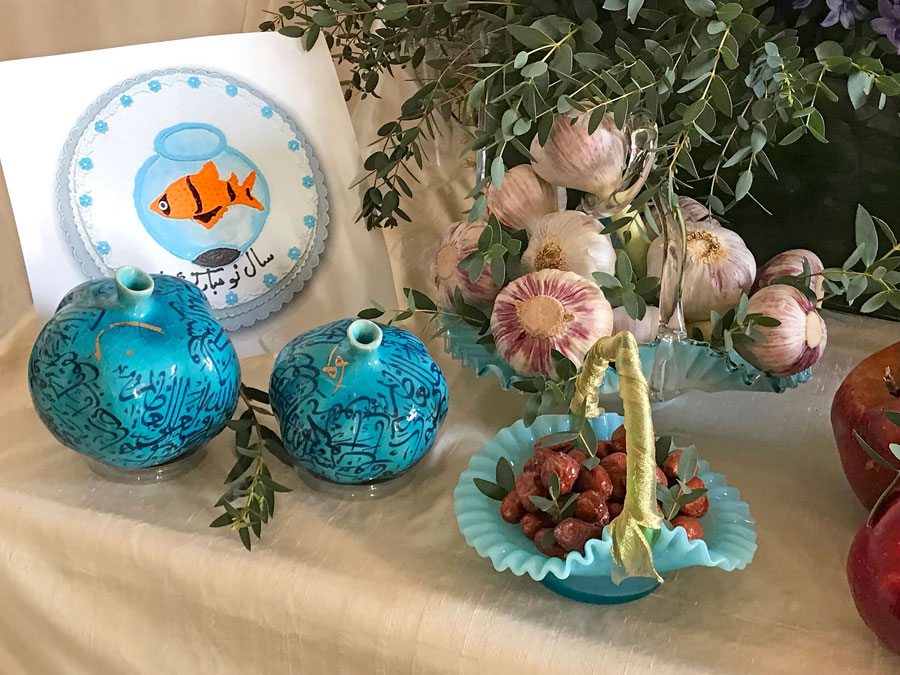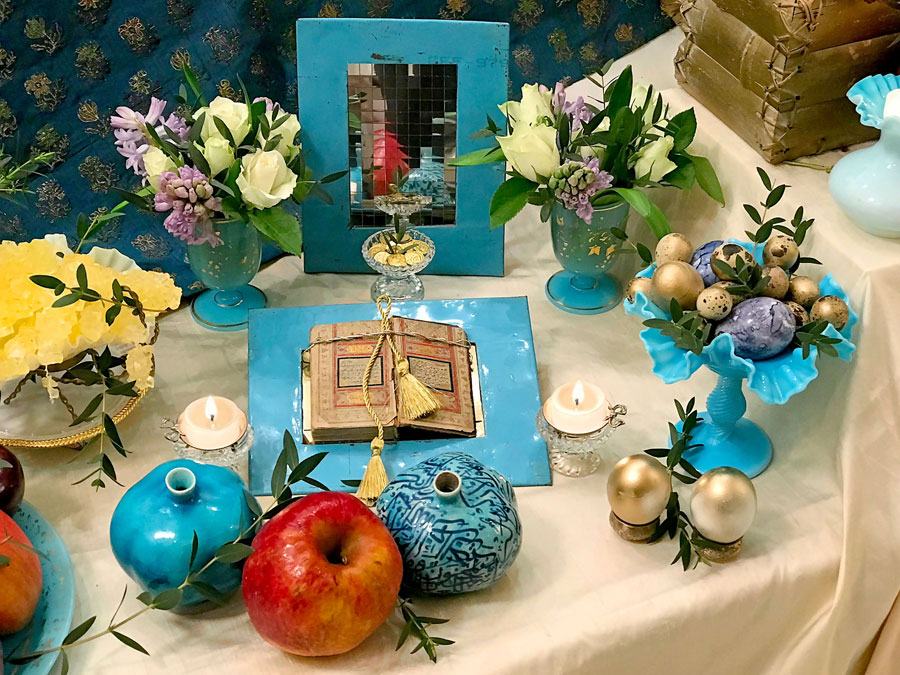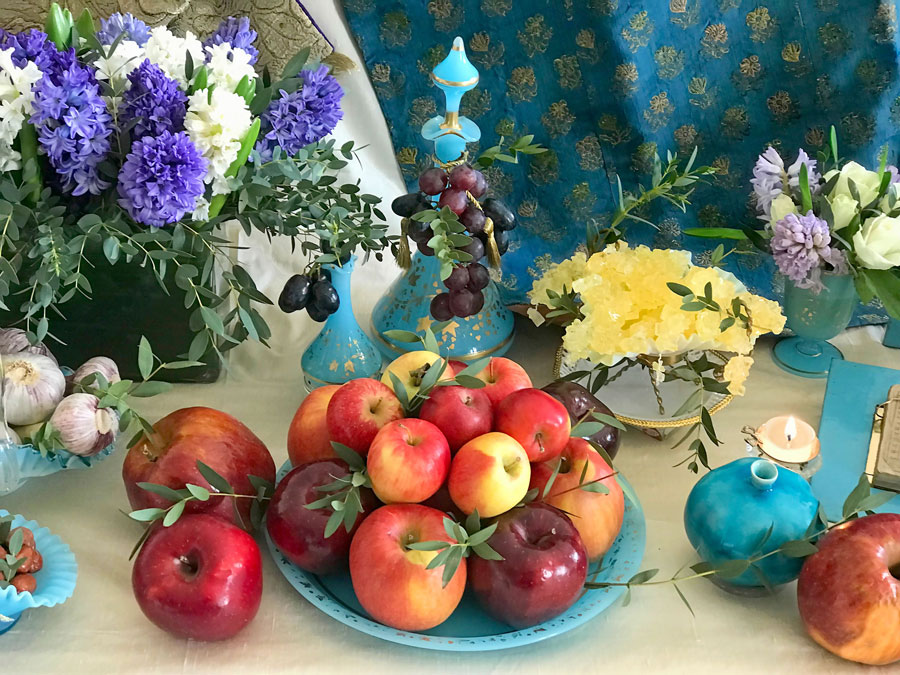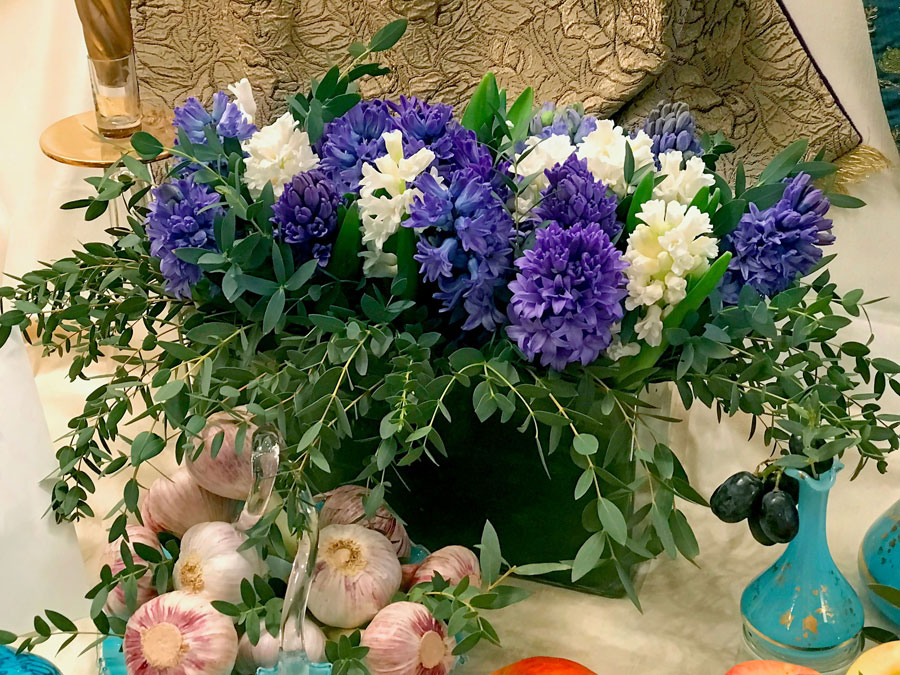Shades of Blue
Showcasing many symbolic elements, this elaborate sofreh-ye haft sinn for the celebrations of Nowruz, in shades of blue, was designed for a private exhibition. Some of the symbolic elements, containers and ceramics, as well as the length of antique Persian brocade, delight in various shades of blue.
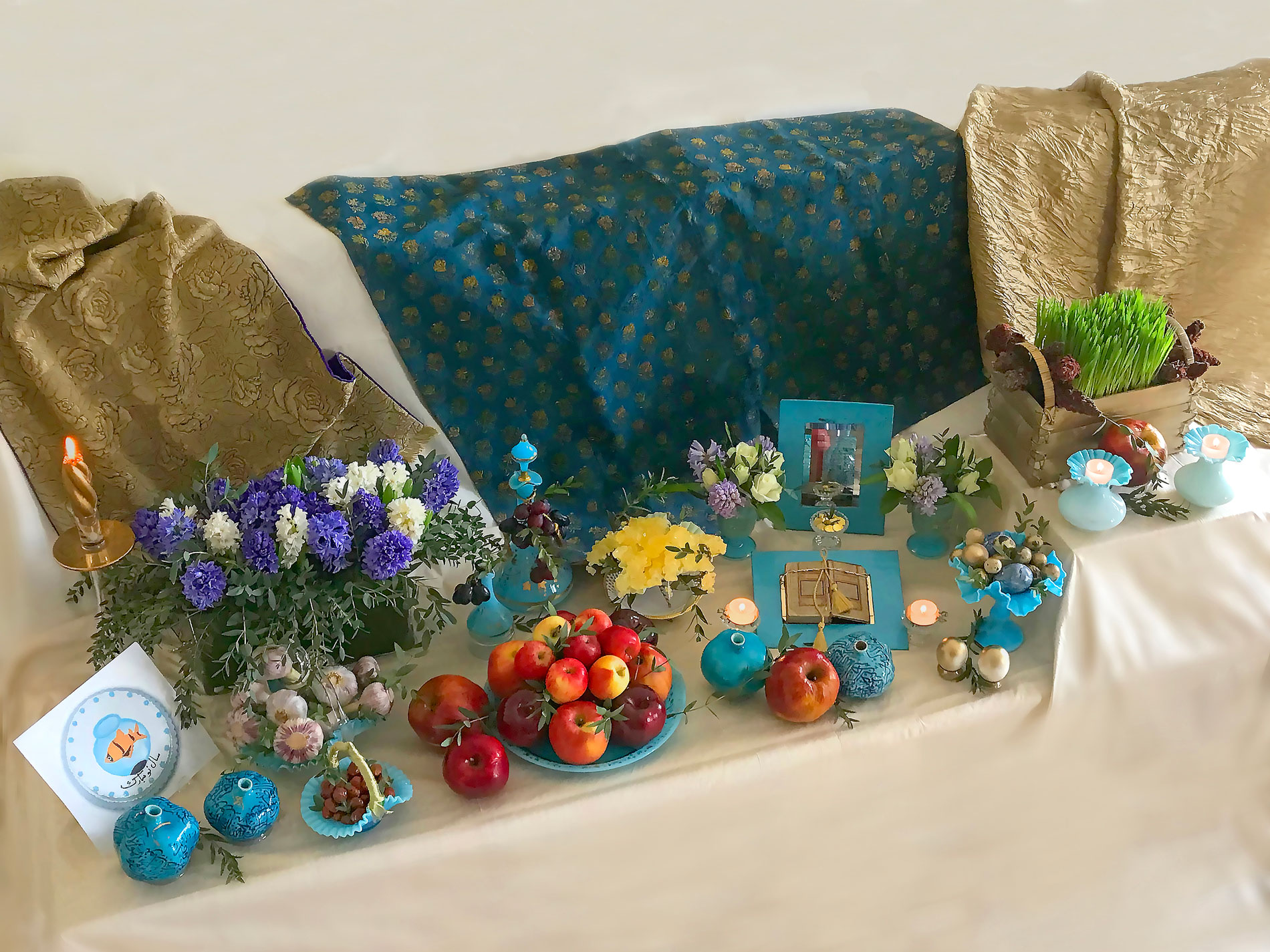
This is the overall view of the sofreh. It includes a mirror, the Qur’an, germinated wheat (sabzeh), hyacinths (sonbol), apples (sib), garlic (sir), sumac (somaq), vinegar (serkeh), gilded coins (sekkeh), crystal sugar and decorated eggs. The presence of seven (haft) items starting with the letter “s” (sinn) explains the term haft sinn. This splendid sofreh, which is softly illuminated with flames, is embellished with lengths of fine textiles.
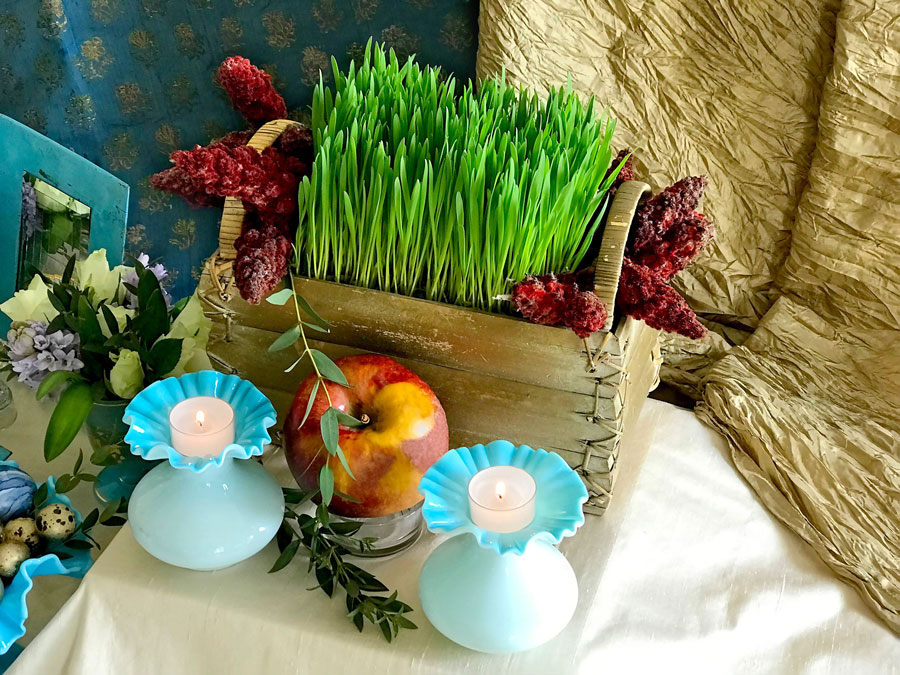
This is one corner of the elaborate sofreh-ye haft sinn, in shades of blue. The focus here is on germinated wheat (sabzeh), the essence of this spring festival and a symbol of rebirth, and branches of sumac (somaq), a symbol of plenty and peace. A large apple (sib), a symbol of fertility, is also on display, and the corner is softly illuminated with the flames of tea lights placed on a pair of dainty blue opaline vases.
